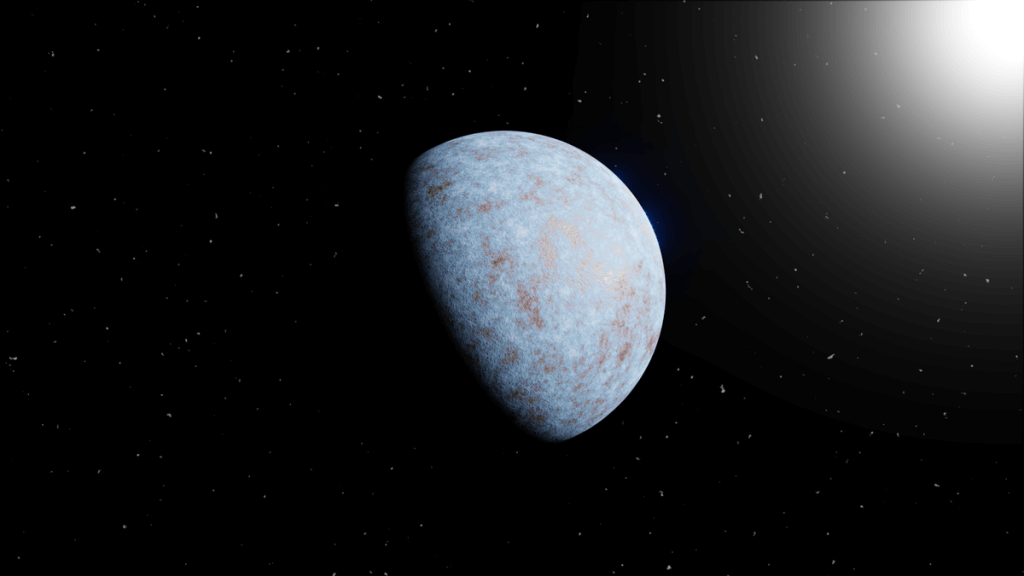
Scorching Neptune-size world is way too massive for astronomers to explain (Image Credit: Space.com)
Astronomers have unexpectedly discovered the heaviest Neptune-like planet yet — one more than four times the mass of our solar system’s Neptune — yet it remains a mystery how the world might have formed.
Between rocky planets about the mass of Earth and gas giants the mass of Jupiter, which holds more than 300 times our planet’s mass, there are worlds the size of Neptune, which holds just about 17 times Earth’s mass. Previous research has found that Neptune-size planets display a great deal of variety, ranging from icy worlds clad in thick atmospheres of hydrogen and helium, such as the Neptune we know and love, to very dense planets made of either substantial amounts of water or bundles of rock wrapped in thinner atmospheres, such as the exoplanets HD 95338 b, TOI-849 b and TOI-2196 b.
In the new study, astronomers investigated TOI-1853, an orange dwarf star about 80 percent of the sun’s mass and diameter. TOI-1853 is located about 544 light-years from Earth in the Boötes constellation. Using NASA’s Transiting Exoplanet Survey Satellite (TESS), they discovered an exoplanet around a star they dubbed TOI-1853 b.
The newfound planet sits about 50 times closer to its star than Earth is to the sun, completing one orbit in just 30 hours instead of the 365 days it takes Earth. The planet’s extreme proximity to its host star also makes it searing hot at about 2,200 degrees Fahrenheit (1,200 degrees Celsius).
Related: Why are there so few ‘hot Neptune’ exoplanets?
The newfound planet’s diameter is about 3.46 times larger than Earth’s, making it a bit smaller than Neptune, which is about 3.8 times wider than Earth. However, upon using Italy’s Galileo National Telescope on the island of La Palma to measure the strength of TOI-1853 b’s gravitational tug on its star, the scientists estimated this exoplanet’s mass is about 73 times greater than Earth’s. This means its mass is nearly equal to the mass of Saturn, which is about 95 times more massive than Earth.
All in all, TOI-1853 b is about six times denser than Neptune and nearly twice as dense as Earth. This makes it the densest Neptune-size planet known to date.
“Our result is yet another proof that exoplanet research is constantly holding surprises,” study lead author Luca Naponiello, an astrophysicist at the University of Rome, told Space.com. “We are still finding truly unique worlds decades after the first discovery. It’s exciting to be part of this journey.”
“The discovery of TOI-1853 b implies that large planets can have surprising amounts of heavy elements, much more than previously thought,” Naponiello added. “Neptunian planets show an astonishing variety of density and compositions, but we didn’t believe they could be so compact.”
For the most part, exoplanets that orbit their stars as closely as TOI-1853 b does are either rocky planets with diameters less than twice Earth’s or so-called hot Jupiters, gas giants sizing in at more than 10 times Earth’s diameter. Mysteriously, scientists have only found a few hot Neptunes such as TOI-1853 b, a phenomenon dubbed the “hot Neptune desert.”
Conventional theories of planetary formation would suggest that TOI-1853 b should not exist, Naponiello said. But seeing as it clearly does, one possibility for the planet’s formation is that it was born catastrophically from collisions “between large proto-planets such as super-Earths,” he explained. “These huge impacts would have removed part of the original atmosphere and water, leaving mostly rock behind. If this is the case, TOI-1853b is likely to have a brother not too far away.”
If astronomers do not end up finding a sibling of TOI-1853 b nearby, another possible explanation for the planet’s origin is that it was a giant planet in a highly “eccentric” or oval-shaped orbit. This would have led to regular close encounters with its star, causing the world to lose much of its atmosphere and leaving behind a dense core. These stellar flybys could also have eventually made the planet’s orbit less eccentric over time, explaining the trajectory’s currently circular shape.
The researchers suggested TOI-1853 b may be mostly rocky and surrounded by a small envelope of hydrogen and helium that makes up 1 percent of the planet’s mass – at most. Another possibility is that TOI-1853 b may be composed of about 50 percent rock and 50 percent water. If true, it would mean its atmosphere may be rich in water vapor, Naponiello said, due to the planet’s extreme heat
To really figure out TOI-1853 b’s composition, scientists would have to analyze its atmosphere, Naponiello said. However, this will likely prove difficult even with NASA’s extraordinarily powerful James Webb Space Telescope, since “we expect its atmosphere to be very thin, if existent at all,” he said.
“Understanding the nature of this planet will definitely be challenging.”
The scientists detailed their findings online Aug. 30 in the journal Nature.





